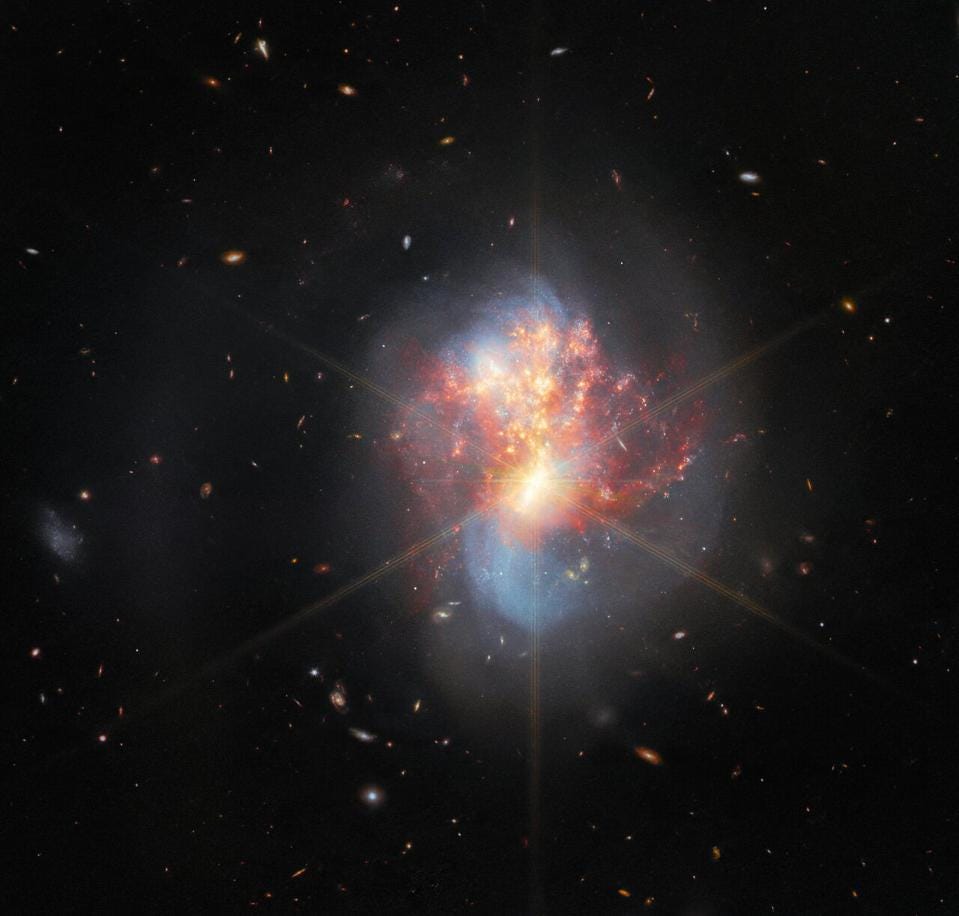Cosmos IC 1623 JWST
The James Webb Space Telescope photographed a collision of two galaxies that’s sparking a flurry of star formation invisible to other telescopes. The wave of star birth was triggered by the encounter of two galaxies known by the common name IC 1623. The merging couple is producing stars at a rate 20 times faster than that of our own Milky Way galaxy, scientists said. The galactic clash was previously imaged by other telescopes, including Webb’s predecessor the Hubble Space Telescope, which specializes in detecting optical light (the kinds of wavelengths visible to the human eye). But because IC 1623 is wrapped in a thick shield of dust, astronomers had not been able to peer deeper inside the galaxies to see the forming stars.
IC 1623 is an interacting galaxy system that is very bright when observed in the infrared. One of the two galaxies, the infrared-bright, but optically obscured galaxy VV 114E, has a substantial amount of warm and dense gas. Warm and dense gas is also found in the overlap region connecting the two nuclei.
Observations further support the notion that IC 1623 is approaching the final stage of its merger, when a violent central inflow of gas will trigger intense starburst activity that could boost the infrared luminosity above the ultraluminous threshold. The system will likely evolve into a compact starburst system similar to Arp 220.
IC 1623 is located about 300 million light-years away from Earth.
